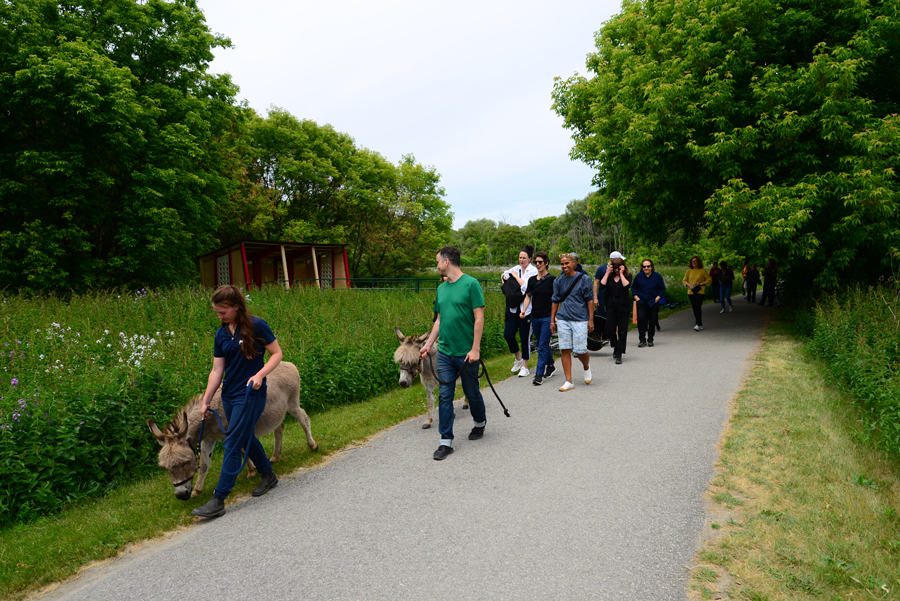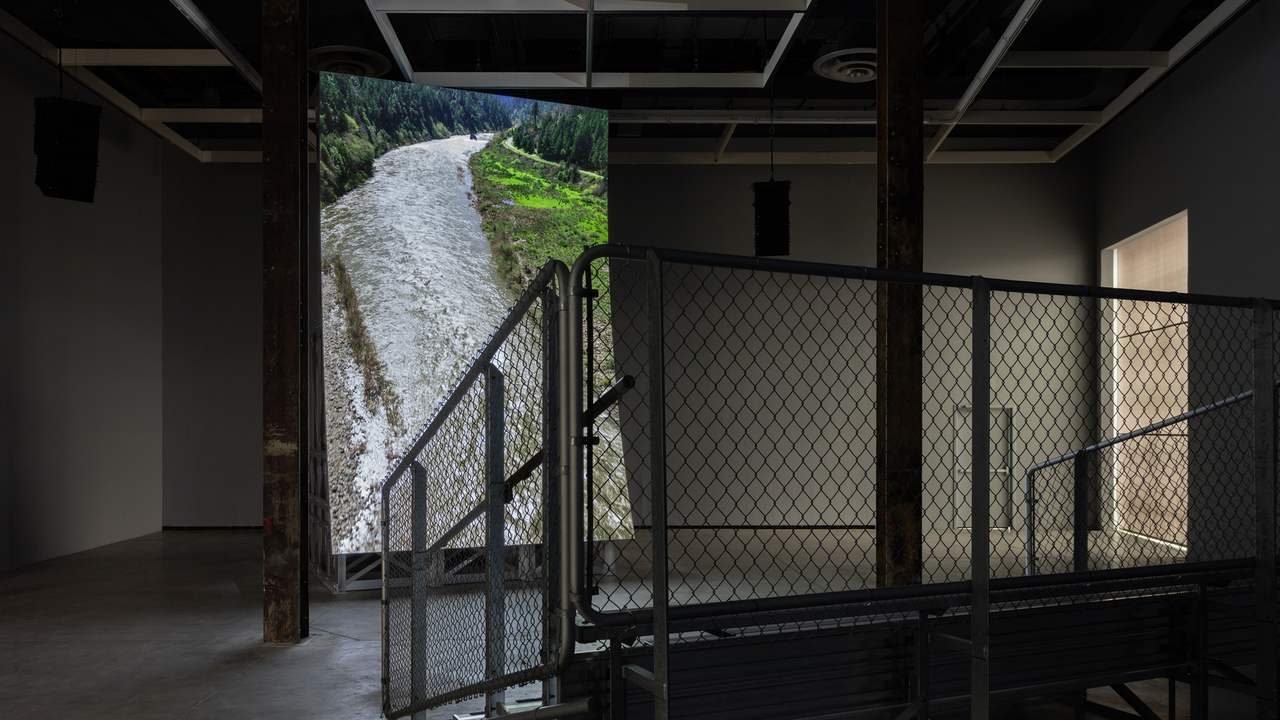In Toronto’s Don Valley a Public Art Project Exploring Work, Shelter and Sanctuary
Every night they dissembled the shed; every morning they built it anew
Every night they dissembled the shed; every morning they built it anew

Toronto’s Don Valley is a lush, hybrid ecosystem in the city’s east end. It cradles the Don River and now runs underneath the winding expanse of the Don Valley Parkway, its concrete, parallel artery. There is a path – an abandoned railway – many have followed to the Don from Toronto’s ultra-rich Rosedale neighbourhood: Milkman’s Lane, so named because of the delivery people who once traversed this path back and forth from the Valley, formerly a bustling industrial area with factories and farms. Currently, Milkman’s Lane leads to Evergreen Brick Works, a retrofitted brick factory and surrounding environs where curator Kari Cwynar has been programming innovative, temporary public art for the past year. This route and destination contain significant class, race and ecological tensions: histories of colonial displacement and resource extraction, pollution, neglect, so-called invasive species and squatters, including those with addiction and mental-health issues, whose alternative society has, for years, resisted Toronto’s WASPy frigidity and increasingly impossible expense.

In June, Cwynar programmed artist Gareth Long’s performance Travels with Two Donkeys in the Valley (2018). Not dissimilar to ‘Milkman’s Lane,’ the name and nature of Long’s project are deceptively twee, pastoral. For four consecutive weekends, Long took two adorable, Instagrammable, miniature donkeys named Marci and Gemini (the former sporting a dapper, shag haircut) on a short walk up and down the Lower Don River Trail, leaving them to rest in a provisional shed designed by Long with the assistance of architect Christian Kliegel. Kliegel and Long’s construction is based on a modular schoolhouse designed by French architect Jean Prouvé, who devised demountable structures as a low-cost response to his country’s housing shortage after World War II. Every night for the duration of the performance, Long and students from the University of Toronto dissembled the shed. Every morning, they built it anew.

Though in keeping with Long’s interest in the philosophies and absurdities of modernist industrial design (a previous work, Bouvard and Pécuchet’s Invented Desk for Copying (2007–ongoing), materializes a desk from Gustav Flaubert’s last, unfinished novel about two feckless, pretentious copy clerks), Long and Kliegel’s construction, and deconstruction, was born of necessity. No new structures can legally remain in the Don overnight. According to a March 2018 report by Global News, the City of Toronto eliminated 313 encampments from ravines and parks last year, its justification a bylaw against overnight camping in these areas. Long’s donkey shelter also rests underneath the Bloor Street Viaduct, a Toronto landmark as charged and fraught as the Don Valley. Constructed in 1918, the large bridge integrated the eastern part of the city, but was also the site for almost 500 deaths by suicide until 2003, when a barrier was built, remarkably called ‘The Luminous Veil’. (Before the Veil, the Viaduct was second only to the Golden Gate Bridge as a global site for suicides.) Michael Ondaatje’s 1987 novel In the Skin of a Lion acknowledges the bridge as a towering site of death, not only of those suffering from mental-health issues but also of those workers who initially lost their lives in its construction.

As traditional symbols of labour, dispossession and mis-ascribed stupidity, the donkeys, on loan from the nearby Donkey Sanctuary of Canada, thus activate and represent the Don poignantly, and in a manner that is hardly cute. Indeed, standing near the donkeys’ shelter with a direct view of the Viaduct overhead, the site feels like a graveyard. Long received facilitating help from the Donkey Sanctuary, and so one could pick up donkey literature at the site of the performance, with information on ‘common donkey illnesses’ and donkey needs, among them: ‘Your donkey needs company! Try to keep at least two donkeys together’; or, ‘Each donkey needs half an acre of grazing space’. It is worth noting that, as ancient labourers, the prototypical animal-slave, donkeys have rarely been afforded either of these things.

Importantly, the donkey has tended to function as a cultural symbol in relation to its owner. The compassionate donkey owner – a rarity, even a subject of ridicule – possesses a gentleness typically ascribed to the feminine, something of which Long, a straight white man, seems smartly aware. Christ rode into Jerusalem on a donkey to convey that he was not in fact bellicose, but the Prince of Peace. The anomalous intimacy between donkey and human is the source of legendary, feminine-inflected metamorphosis. In Apuleius’s The Golden Ass, the only complete, extant novel from ancient Rome, the protagonist Lucius is transformed into a donkey, and only rescued from this fate when sufficiently humbled by the goddess Isis, into whose cult he is inducted. In A Midsummer Night’s Dream, after a spell cast by her jealous lover Oberon, Titania falls in obsessive and, depending on the production, compellingly erotic thrall to the working-class Bottom, whose head has transformed into that of an ass. Like Titania, Marie (Anne Wiazemsky) in director Robert Bresson’s film Au Hasard Balthazar (1966) puts flowers in her donkey’s hair, her attachment to this beast of burden a tonic to the leering teenage boys who stand in contrast to his abiding, gentle strength. ‘Au Hasard Balthazar is about our anxieties and desires when faced with a living creature who’s completely humble, completely holy and happens to be a donkey’, said Bresson of his film. The same can be said of Long’s intriguing, and fundamentally moral, project.
Main image: Gareth Long, Travels with Two Donkeys in the Valley, 2018, performance documentation. Courtesy: the artist; photograph: Gareth Long





















